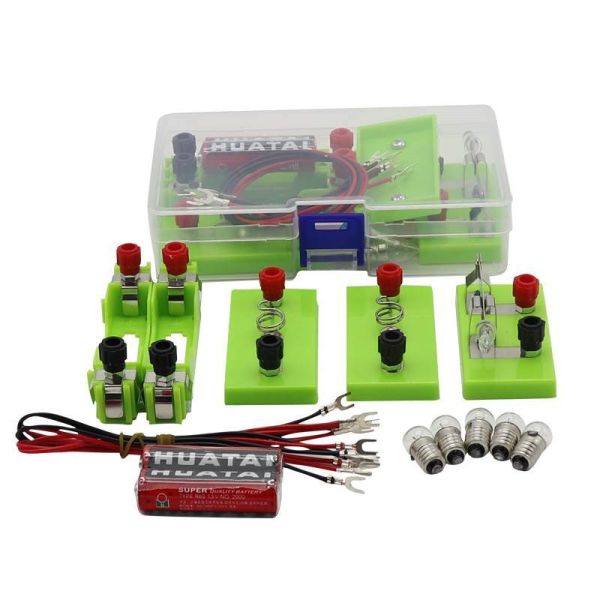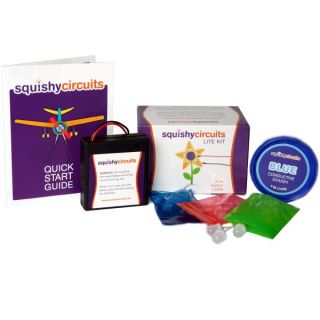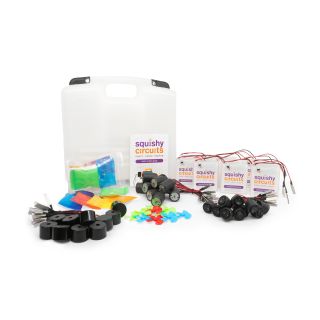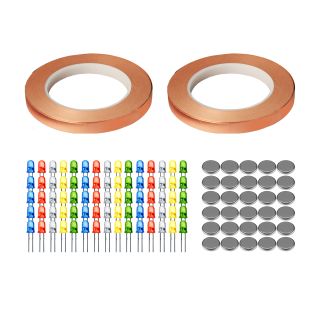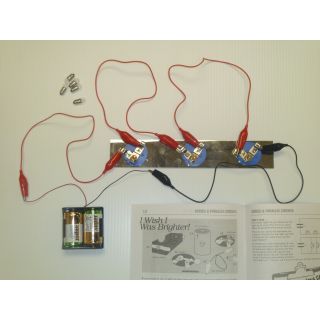All Categories
Circuit Experiment Demo Kit - Cat# 80-50-LP10
In stock
SKU
80-50-LP10
CA$11.25
- Buy 2 for CA$10.30 each and save 8%
- Buy 6 for CA$9.40 each and save 16%
Circuit Experiment Demo Kit — A Hands‑On STEM Experience
Introduce your students to the fundamentals of electrical circuits with the Circuit Experiment Demo Kit. This engaging project allows students to build and experiment with both series and parallel circuits, providing a practical application of science and engineering concepts in a classroom setting.
What’s in the Kit & How It Works
The kit includes:
Light bulbs
Battery holders (AA batteries NOT included)
Wires
Switches
Clear and simple instructions for assembly
Students will assemble the components to create both series and parallel circuits. By connecting the components in different configurations, students can observe how electricity flows through the circuits and how different setups affect the performance of the light bulbs.
STEM Concepts Illuminated
This kit provides an excellent opportunity to explore various STEM concepts:
| STEM Area | Key Concepts | Classroom Applications & Extensions |
|---|---|---|
Electricity | Current, voltage, resistance | Discuss how electricity flows through circuits; explore the relationship between voltage, current, and resistance. |
Circuit Design | Series vs. parallel circuits | Compare and contrast series and parallel circuits; understand how different configurations affect circuit behavior. |
Engineering | Component selection, troubleshooting | Examine how different components affect circuit performance; troubleshoot and modify circuits to achieve desired outcomes. |
Physics | Energy transfer, power | Discuss how electrical energy is converted into light and heat; explore the concept of electrical power. |
Technology | Application in everyday devices | Relate the concepts learned to real-world applications such as household wiring and electronic devices. |
Why Teachers Will Love It
Hands-On Learning: Students actively engage in building and understanding the mechanics of electrical circuits.
Cross-Disciplinary Connections: Integrates concepts from science, technology, engineering, and mathematics.
Encourages Critical Thinking: Students can experiment with different configurations and observe outcomes.
Affordable and Scalable: Cost-effective for classroom use and suitable for group activities.
Classroom Activity Ideas
Series vs. Parallel Comparison: Have students build both types of circuits and compare the brightness of the light bulbs.
Component Exploration: Encourage students to modify the circuit by adding more components and observe the effects.
Energy Efficiency Discussion: Discuss how the configuration of a circuit can affect energy consumption.
Real-World Applications: Explore how the concepts learned apply to everyday electrical systems and devices.
Bring science and engineering together in a creative, hands-on project. With the Circuit Experiment Demo Kit, students won't just learn about electricity—they'll experience it firsthand.





